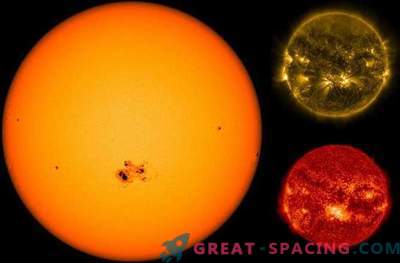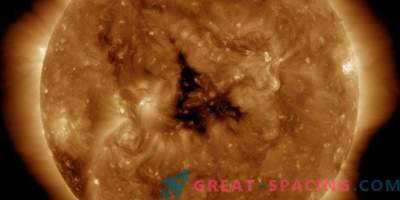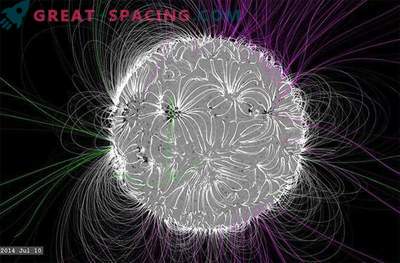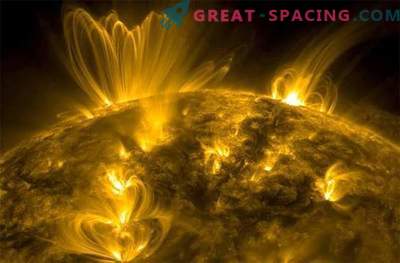
A complete picture of the solar corona was made on October 4th using filters that are sensitive to three different EUV emission wavelengths from the solar corona. Bright areas in the lower corona emphasize active areas, where flares and coronal mass ejections were most likely caused by spots in the contours of the magnetic field lines. Dark places show areas of “open” magnetic field lines, where plasma, spreads into space like a fast solar wind.
Yes, exactly, there is a hole in the Sun, but do not be afraid that this is not a sign of something terrible. In fact, it gives us an understanding of the rather steep solar dynamics.
Reproduced by NASA's Solar Dynamics Observatory using ultraviolet-sensitive filters, this huge dark spot in the center of the solar disk is an area with low plasma density in the solar corona (the multimillion degree of magnetized solar atmosphere).
The solar corona is a predominantly magnetic field filled with "open" and "closed" magnetic field lines that protrude from the solar surface and are sent to the corona along which the heated plasma moves. Bright areas in the image display the locations of closed lines of force known as coronal loops. Dense plasma falls into the trap of these graceful loops and, heating up, generates intense radiation. However, in this observation of the sun, it is obvious that the dark spot is turned into a field of view, and this is a sign that the density is low, and the hot plasma, escaping from the corona, is released into interplanetary space.
Coronal holes are a source of fast solar wind, which has an impact on cosmic weather on Earth, and this coronal hole, which embodies the flow of high-speed plasma (high-energy particles, which consist mainly of protons), is the most significant for us. The magnetic field of the coronal holes acts as a fire hose, spraying the coronal plasma from the Sun as it rotates, spiraling through the solar system.
Source Spaceweather.com, states that the plasma from this coronal hole will reach near-earth orbit on October 8-9. It is possible that, depending on the magnetic conditions, the arrival of this flux of fast solar wind can activate the intensity of the aurora at high latitudes.
Like solar flares and coronal mass ejections (CME), intense intensifications of the solar wind activity can increase the radioactive background around the Earth, affecting sensitive electronics on satellites and spacecraft. NASA's Space Observatory (SDO) and an armada of other solar observatories, such as the NASA Solar Heliosphere Observatory and Heliospheric Observatory (SOHO) of the Japanese Hinode space telescope, constantly observe explosive corona moments and coronal holes. So it is possible to predict the cosmic weather as accurately as possible before it affects the Earth.











































